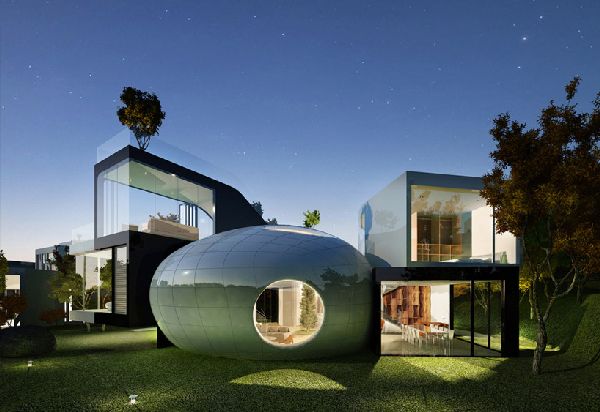Planning Korea has envisioned a design for a seaside condominium in Jeju Island, South Korea, that’s a unique take on the region’s volcanic topography. The island is home to the Jeju Volcanic Island and Lava Tubes that are World Heritage Sites. In view of this aspect, Planning Korea considered designing the condominium around Jeju’s unique topographical features.

The almost futuristic design comprises a cocoon-like structure with rounded ceilings and circular windows. The space would be ideal for art exhibitions, gatherings and as a library space. The spherical structure is flanked on two sides by cubical buildings that sport huge glass panes on virtually all sides. This gives occupants a panoramic view of the sphere and the surrounding landscape. One of the cubical structures also features a roof garden with shrubs and grass to help keep the air fresh and temperatures cool.
The project involves sourcing locally produced materials to minimize carbon footprint. The design itself facilitates the movement of natural air and entry of natural light. The interior of the buildings are comfortably designed with a hint of minimalism that seems to be the trend of most modern designers. The structures are surrounded by vegetation which will help keep occupants cool during summers as well as shelter them from chilly weather.
Planning Korea’s eco friendly take isn’t a new concept. In modern times, designers are architects have increasingly looked to sourcing locally produced materials and building structures that don’t require the installation of expensive and power-hungry air conditioners and heating systems. The trend now is to design homes that are green and self-sustainable.
What is interesting about Planning Korea’s design is its futuristic appearance, especially the cocoon structure. Sitting on an island with ancient volcanic topography lends a nice contrast to the surroundings. The condominium is also different from what we see today which usually comprise dull structures with little thought for aesthetics. The architects envision a completion date of 2015.
Via: Designboom




